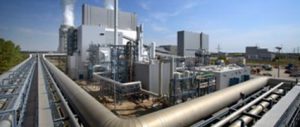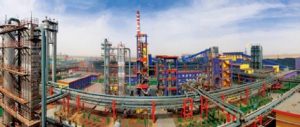To avoid the worst consequences of global warming, the world must limit average temperature increases to two degrees Celsius or less above pre-industrial levels by reducing carbon dioxide emissions by at least 50% below 1990 levels by the year 2050. Several recent studies have found that the warming we are already committed to will exceed that limit even if emissions growth were to stop completely.
Achieving the urgently needed emissions reductions will require efforts beyond first-resort measures such as increasing energy efficiency, scaling up renewable-energy use, and enhancing natural carbon sinks. Given the world’s current heavy reliance on fossil fuels, some countries, such as China and the United States, need to pursue a wide range of carbon-mitigation strategies that should include carbon capture and storage (CCS).
All three components of CCS technology – capture, transport, and sequestration – are commercially mature but have mainly been used for other purposes rather than CCS. Very few integrated large-scale projects are in operation today due to the lack of explicit national climate policies to limit carbon-dioxide emissions. For the technology to contribute to meaningful emissions reductions, integrated commercial projects are urgently needed to gain operational experience and drive down costs. Sequestering high-purity carbon-dioxide waste streams from certain industrial facilities reduces the cost of a CCS demonstration project and thus presents a “low-hanging fruit” opportunity. The Intergovernmental Panel on Climate Change estimates that CCS is capable of contributing 15% to 55% of worldwide cumulative carbon-emission reductions until the year 2100.
CCS is of particular importance for China. Although the country has made significant strides in expanding capacities in hydro, wind, solar and nuclear power, it still meets 70% of its energy needs through coal. By 2020, China is projected to have four times the hydropower capacity and double the wind and solar-power capacity of the United States but these renewable sources will remain small in comparison to coal consumption.
Chinese researcher Kejun Jiang and colleagues project that, even assuming concerted action to restrict the development of energy-intensive industries, taxation policies to encourage energy efficiency and conservation, strong government support for renewable and nuclear-energy development and high efficiency standards in industrial production, coal will continue to meet more than half of China’s energy demand until 2030. Under this aggressive policy scenario, China’s coal consumption could peak around 2020 and then slightly decrease through 2050. Even if coal consumption decreases, China’s carbon-dioxide emissions from all fossil fuels would not decrease without CCS, but would only level off.
China has promising geological-storage potential. Chinese and US researchers have identified over 1,600 large carbon dioxide point sources, 91% of which are located 160 kilometres or less from potential geological sinks and more than half of which are located directly above a candidate formation.
There are at least 130 megatonnes of high-purity carbon dioxide emitted each year from 185 large-scale ammonia, hydrogen, and ethylene-oxide production facilities, according to Xiaochun Li and Ning Wei of the Chinese Institute of Rock and Soil Mechanics (ISRM). Three-quarters of those high purity carbon-dioxide streams are situated within 80 kilometres of a candidate sink. Such streams could total as much as 208 megatonnes per year in China once all planned ammonia, methanol, and liquid-hydrocarbon production facilities come online, according to research by Zhong Zheng, Eric Larson and others, who have told the NRDC about their work. Because the state where carbon dioxide is separated from a gas mixture is skipped, the costs of CCS for several of these sources can range from US$10 (68 yuan) to US$20 (137 yuan) per metric tonne of carbon dioxide avoided, lower than typical estimates for power plants, these researchers say.
Initial basin-scale assessments, performed and published jointly by Li and Wei of ISRM with the US Pacific Northwest National Laboratory (PNNL), suggest that China’s theoretical sequestration capacity in deep saline formations amounts to 3,066 gigatonnes of carbon dioxide – more than 450 times China’s total carbon dioxide emissions in 2005. The practical capacity and matched capacity, however, are expected to be much smaller than the theoretical potential when more factors are taken into account, such as injectivity – the rate and pressure the carbon dioxide can be pumped into the target without fracturing the formation – the effectiveness of carbon dioxide trapping mechanisms, cap-rock tightness, reservoir size, risk from faults, regulations, infrastructure constraints and economics.
Even though China’s sedimentary basins are large in number, they are also among the most complicated in the world and are characterised by numerous small-scale faults and strong faulting activity. These features have led to the formation of complex geological traps, which indicate that detailed, localised studies and site characterisation will be crucial to ensuring the successful application of CCS.
China’s capacity for carbon dioxide-enhanced oil recovery (EOR) and enhanced gas recovery (EGR) is estimated to be up to 10 gigatonnes of carbon dioxide. While the assessments of oil and gas fields were also conducted at the basin level, the researchers used available field-location information to get greater storage-zone resolution. Unlike deep saline aquifers, oil and gas fields generally have more accurate and detailed geological information. According to ISRM-PNNL joint studies, two-fifths of the large carbon dioxide point sources in China are located within 80 kilometres of an oil or gas field and the estimated incremental oil production by EOR in China’s 16 major onshore and three offshore oil basins could technically reach up to seven billion barrels – two and half times China’s current annual oil consumption.
There are a number of near-term opportunities for CCS demonstration in China, including various oil and gas basins that show promising EOR and EGR opportunities from using high-purity carbon dioxide sources or combined waste gas streams. A number of integrated gasification combined cycle (IGCC) projects that are either under construction or in the planning stage have also expressed an intention to conduct a pilot CCS project, as has the Shenhua direct coal-liquefaction plant in Inner Mongolia, northern China.
A number of ammonia plants that are located 50 kilometres to150 kilometres from the oilfields of the Jianghan Basin, in south-central China, collectively emit over four million tonnes of high-purity carbon dioxide per year from manufacturing fertilisers. The combined benefits of short distances between sources and sinks and high potential EOR revenues make the Jianghan area a promising near-term CCS candidate.
The crude natural gas produced at the Jiangyou gas field in western China, contains acid gas – carbon dioxide and hydrogen sulfide – which needs to be removed from the gas product anyway. And the city of Jiangyou, located less than 25 kilometres away, has several large industrial point sources of low-concentration carbon dioxide. Therefore, one opportunity for low-cost CCS demonstration would be using the acid gas mixed with the industrial low-concentration carbon dioxide, without capture, for EGR.
China’s largest coal producer, the Shenhua Group, has a joint US-China project that aims to collect high-purity carbon dioxide from a direct coal-liquefaction facility in the Ordos Basin of Inner Mongolia and is slated to reach operational status in 2010 or 2011, with an aim to eventually sequester 2.9 megatonnes of pure carbon dioxide per year, most likely in a nearby saline aquifer.
The GreenGen project, mentioned in Li Jia and Xi Liang’s chinadialogue article on the economics of CCS, is led by China’s largest power producer, the Huaneng Group and will be China’s first commercial-scale IGCC facility, with plans to capture 25,000 to 30,000 tonnes of carbon dioxide per year starting in 2012-2013, with a higher target set for 2017. This 250-megawatt IGCC plant is currently under construction in the Bohai Basin in Tianjin, north-eastern China.
The China Power Investment Corporation has proposed an IGCC facility in Langfang, near Beijing, that would capture 8% of the carbon dioxide from the syngas – a gas mixture containing varying amounts of carbon monoxide and hydrogen – produced by two 488-megawatt IGCC units. An oilfield is only one kilometre away from the facility site, making sequestration through EOR a prime possibility for this project. The project is awaiting the government’s final approval.
In addition, two other large IGCC projects have been proposed and are seeking government approval, one in Dongguan in Guangdong Province, south-eastern China and the other in Lianyungang in Jiangsu Province, eastern China. The Dongguan project would build four 200-megawatt IGCC units and would be situated 100 kilometres from two depleted oilfields, while the Lianyungan project would eventually build 1200 megawatts of IGCC capacity and 1300 megawatts of ultra-supercritical capacity and would be situated in a coastal city 200 kilometres north of the Subei oilfield. Both projects have expressed an interest in combined CCS and EOR.
An earlier version of this article was published by the Natural Resources Defense Council, as “Identifying near-term opportunities for carbon capture and sequestration (CCS) in China”. It is a summary of a full report, co-authored by Jingjing Qian, George Peridas, Jason Chen and Yueming Qiu, Julio Friedmann, Xiaochun Li, Ning Wei, S Ming Sung, Mike Fowler, Deborah Seligsohn, Yue Liu, Sarah Forbes, Dongjie Zhang and Lifeng Zhao.
NEXT: The value of international cooperation
Homepage image from Huaneng shows its planned IGGC plant in Tianjin, north China.



